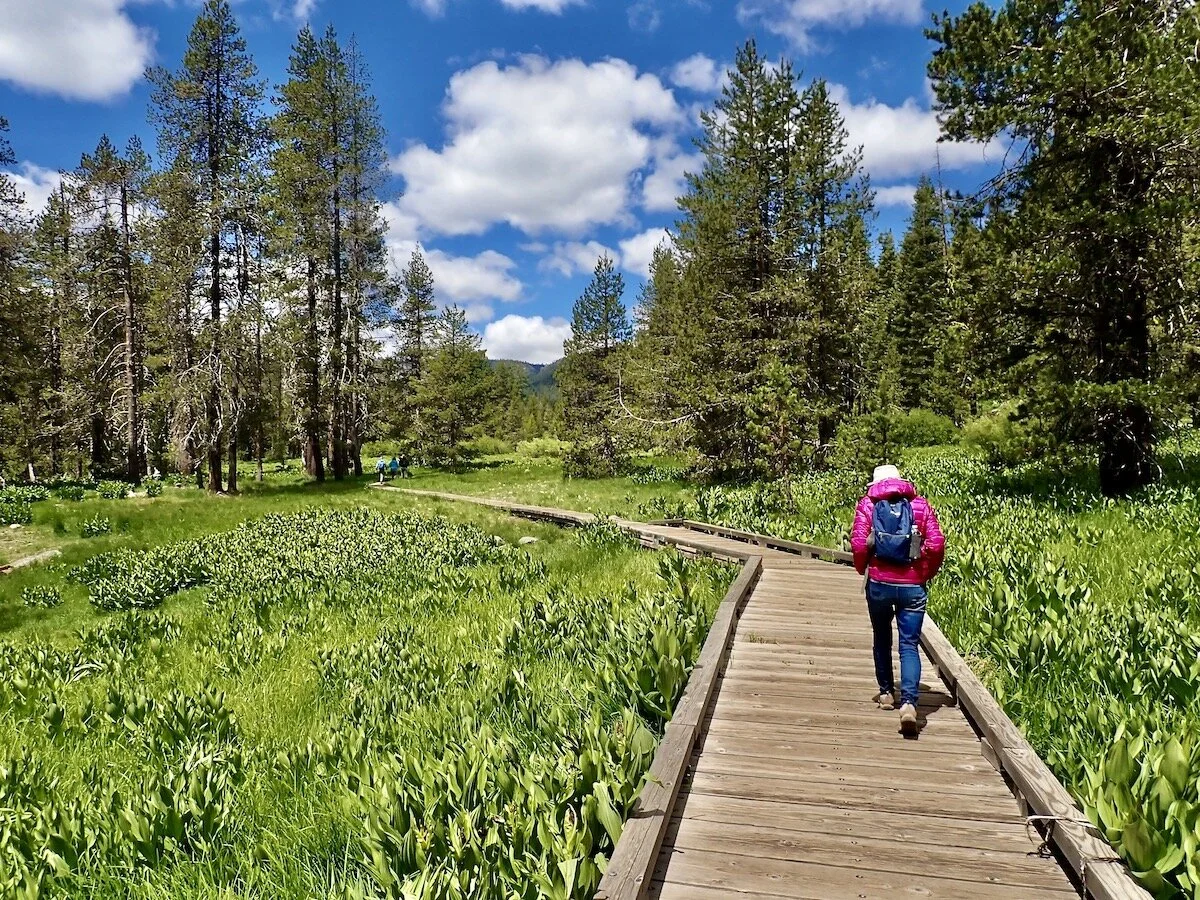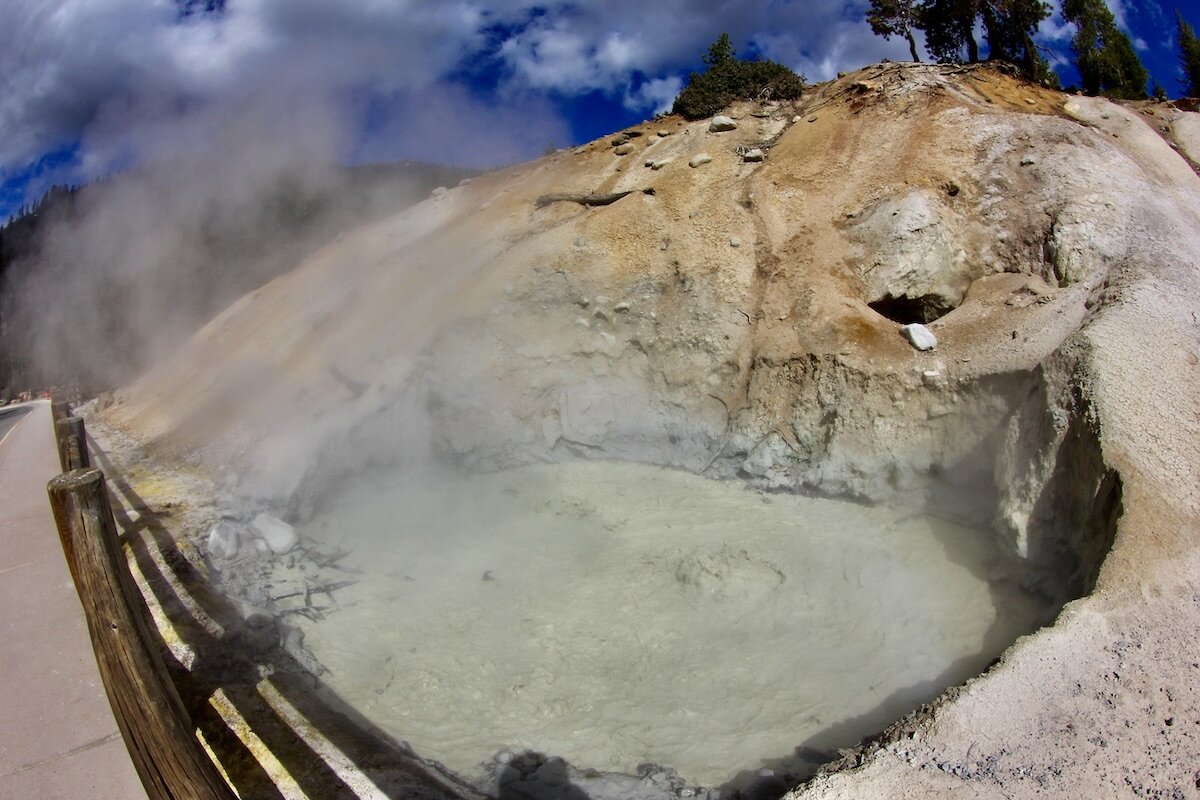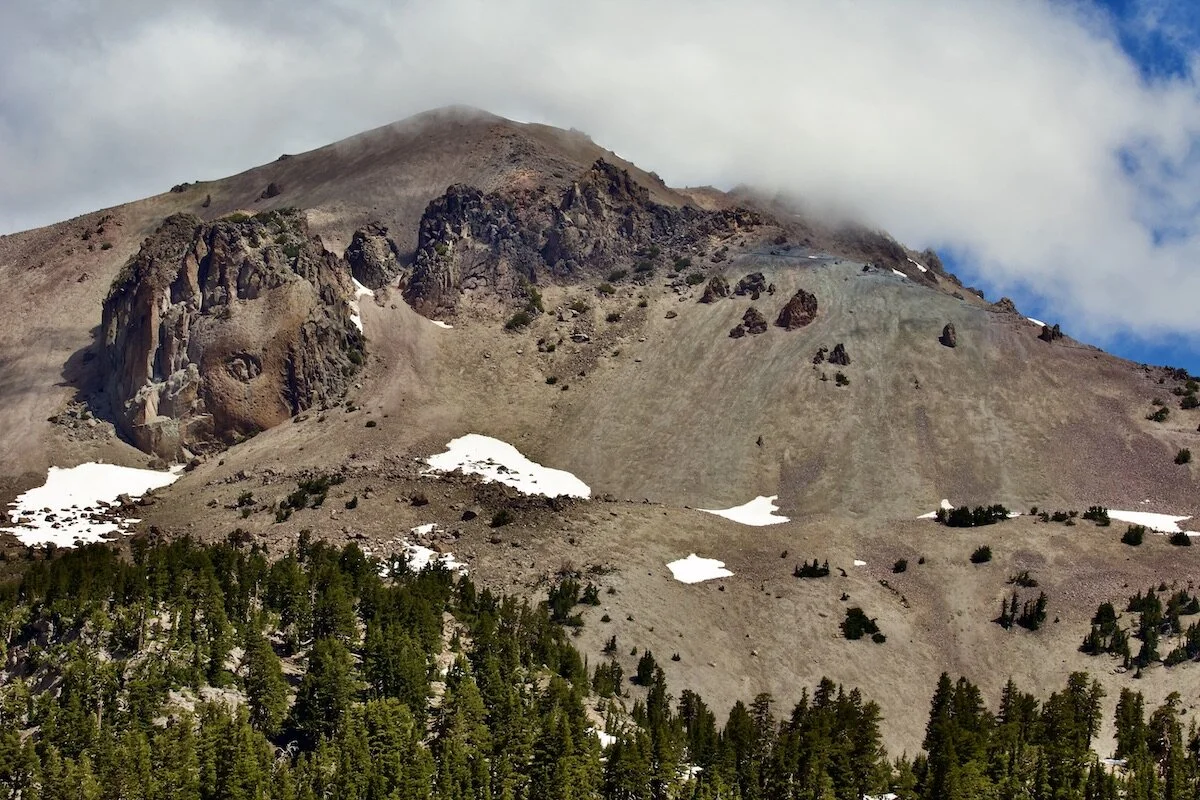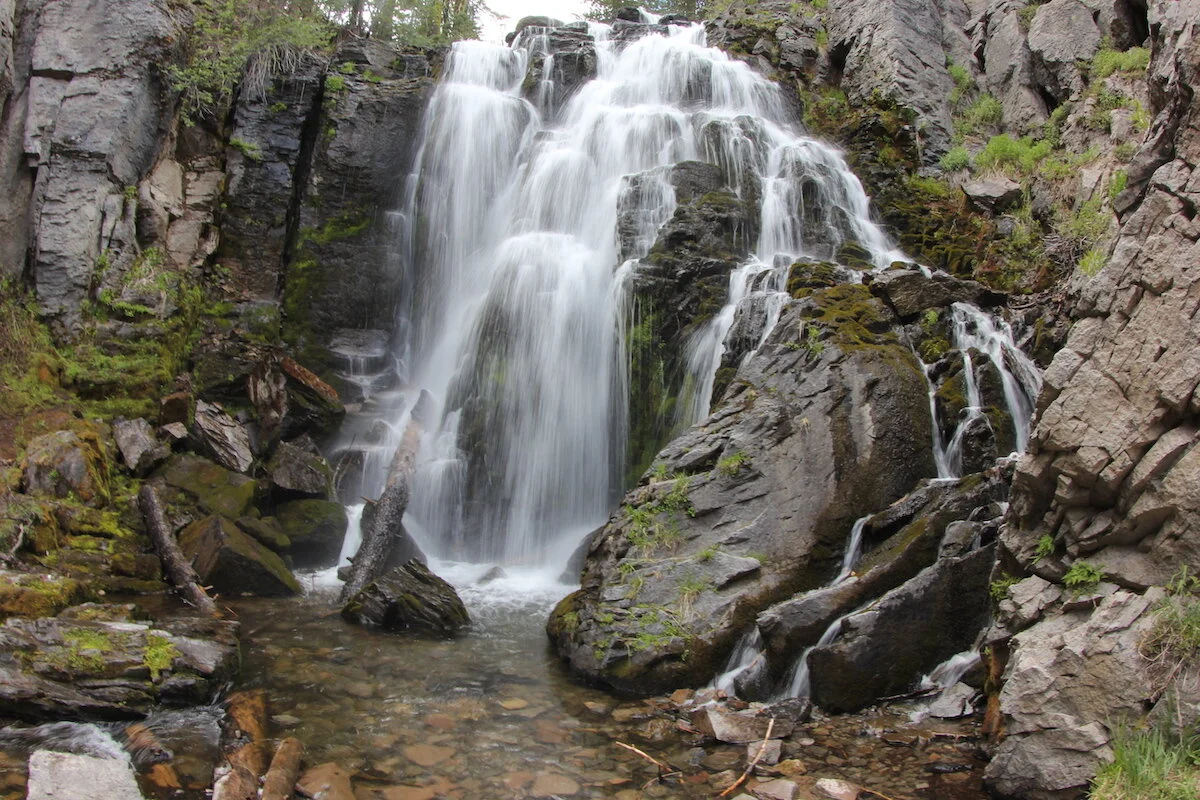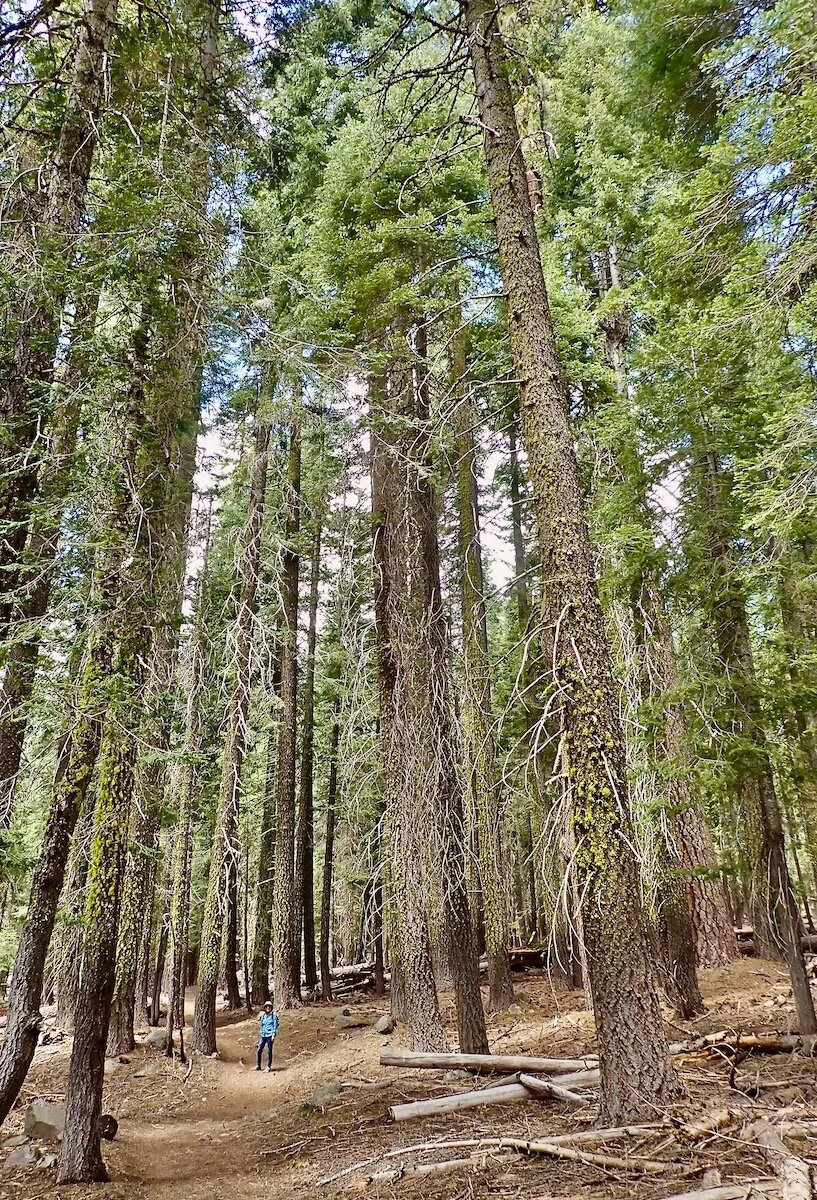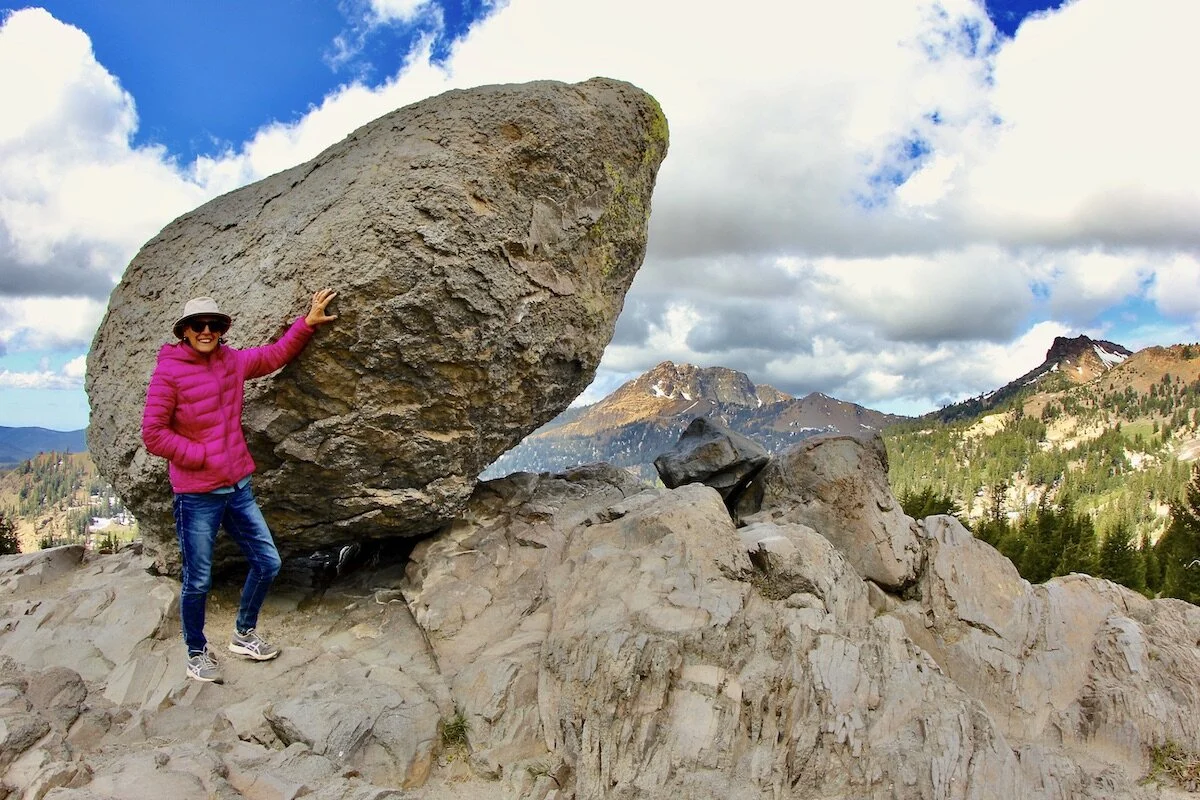Traveling America By Van: Lassen Volcanic National Park
By: John Kumiski
A volcanic national park? What the heck is that? Will I see volcanoes blowing up?
A boiling mud pit, or fumarole, at Sulfur Works.
When you visit Lassen for the first time, you don't know what to expect. It slaps you in the face pretty quickly! After leaving the visitor center, a short ride puts you at Sulphur Works. Here, numerous vents in the ground emit sulfur-stinking steam. If you leave your car and walk a short distance, you come to a pit of mud, boiling away merrily, technically called a fumarole. It also stinks of sulfur. The element is deposited on the ground all around. Other than Yellowstone, I don't know where else you might see this.
Mt. Lassen, at over 10,000 feet the highest point in the park and a plug dome volcano, last blew in 1916, hardly an eye-blink in geologic terms. While we declined to make the 2000-foot elevation gain necessary to reach its peak, healthy and motivated hikers can and do make the five-mile round trip all the time.
Mists swirl around the peak of Mt. Lassen.
A healthy and motivated hiker can also climb the Cinder Cone, an 8,000-foot peak. Volcanoes come it four different types. Lassen Park contains all four. Cinder Cone is a cinder cone, another, different type! Cinder cones form when hot lava gets propelled forcefully into the air. It cools quickly, comes down solid, and forms a pile of cinders around the vent. I wanted to try this hike, but Susan nixed it. She knew it was too much for me.
Instead, we went on a hike to King's Falls, a lovely waterfall. This two-mile-plus round-trip hike required a 400-foot elevation gain, quite steep, and it was all I could manage. This path that so hurt me had some of the finest trail work I've seen anywhere, the work of skilled artisans. It was worth the hike just to see the trail work!
King's Falls, worth the walk.
We also went on a hike to the Devil's Kitchen, a four-mile-plus round trip through gorgeous meadows and conifer forest. The entire Devil's Kitchen area emits sulfury steam, quite a display of Nature's powers, and a reminder that Lassen and other nearby volcanoes are not dead, only sleeping.
While walking through the woods on this hike, something bright red caught my eye. I stopped to examine it. It looked like a bright red flower stalk coming out of the ground, no green parts attached. Well, that's strange! There were several of them in the area.
Snow plants, growing out of decaying wood. Among the strangest plants I've ever seen!
Later, in the town of Chester, we stopped at a coffee house/bookstore. There, in the Audubon Guide Field Guide to North American Wildflowers: Western Region, was a photo of my specimen, called a snow plant (Sarcodes sanguinea Torr.). Lacking chlorophyll, they perform no photosynthesis, drawing all their nutrients from fungus in the humus in which they grow. My son Maxx thinks they're aliens.
You'll pass through some coniferous forest on the trail to Devil's Kitchen.
A hike we wanted to take but could not, due to the trail being covered with ice and snow and thus closed, was into a place called Bumpass Hell. Geothermal features here include steam vents and boiling mudpots. Perhaps a reason for another visit, eh?
Even if hiking is not your idea of entertainment, a drive along the Park Highway alone is worth the trip. The scenery is stunning, mountains, lakes, and vistas, with plenty of places to pull off and admire it. Several short interpretive trails along this road give insight into the forces causing the park's volcanism. And the chance to see rocks that are known to be only 105 years old, formed during Lassen's last eruption, is an attraction for anyone with a passing interest in geology.
I left an explanation unfinished. Another type of volcano is the shield volcano, formed by successive outpourings of very liquid lava. Lassen Park's Mt. Harkness is an example, as are the Hawaiian Islands.
Susan plays with a roadside boulder. Brokeoff Mountain is behind her.
The final volcano type is the composite type, made up of cinders, ash, and lava. Lassen Park's Brokeoff Mountain, all that's left of the enormous Brokeoff Volcano, is an example of this final type of volcano. Brokeoff Volcano, which erupted over 25 million years ago, was so large that the entire area of Lassen Park sits in its caldera. Most of it has eroded away.
But wait! There's more! In the northeast corner of the park, near where Cinder Cone lies, you find the expansive Fantastic Lava Flow. I only got to see the edge of this impressive feature and would love to see more. Perhaps reason for another trip!
Late afternoon at Butte Lake. The stoney material on the right is the edge of the Fantastic Lava Beds.
The park has several campgrounds, many of which were yet to open during our visit. Our last morning there we awoke to 37 degrees and snow flurries- spring was just getting there. Snow was everywhere, so some campgrounds were not open.
Anyone intending to stay in the park needs to bring everything they'll need. Nowhere in the park will you find supplies. In the town of Chester, on the south side of the park, you may find last-minute supplies, as well as a good cup of coffee and breakfast.
Lassen Volcanic National Park is one of the most awesome national parks you've never heard of. I can't recommend it highly enough. For more information visit their website at https://www.nps.gov/lavo/index.htm.
Have you done something interesting outdoors? Join Global Outdoors and write a review to tell everyone about it! We’re building the home for trusted reviews of outdoor experiences, outfitters, and guides.
